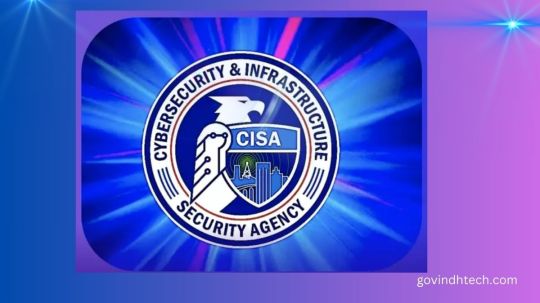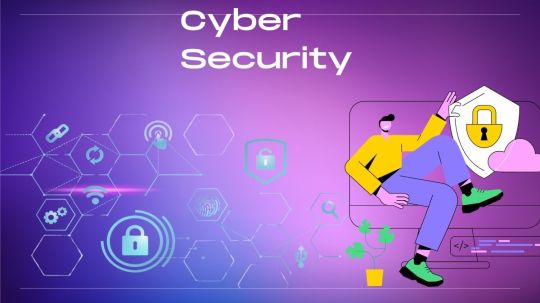#CISA
Text
Decoding CISA Exploited Vulnerabilities

Integrating CISA Tools for Effective Vulnerability Management: Vulnerability management teams struggle to detect and update software with known vulnerabilities with over 20,000 CVEs reported annually. These teams must patch software across their firm to reduce risk and prevent a cybersecurity compromise, which is unachievable. Since it’s hard to patch all systems, most teams focus on fixing vulnerabilities that score high in the CVSS, a standardized and repeatable scoring methodology that rates reported vulnerabilities from most to least serious.
However, how do these organizations know to prioritize software with the highest CVE scores? It’s wonderful to talk to executives about the number or percentage of critical severity CVEs fixed, but does that teach us anything about their organization’s resilience? Does decreasing critical CVEs greatly reduce breach risk? In principle, the organization is lowering breach risk, but in fact, it’s hard to know.
To increase cybersecurity resilience, CISA identified exploited vulnerabilities
The Cybersecurity and Infrastructure Security Agency (CISA) Known Exploited Vulnerabilities (KEV) initiative was created to reduce breaches rather than theoretical risk. CISA strongly urges businesses to constantly evaluate and prioritize remediation of the Known Exploited Vulnerabilities catalog. By updating its list, CISA hopes to give a “authoritative source of vulnerabilities that have been exploited in the wild” and help firms mitigate risks to stay ahead of cyberattacks.
CISA has narrowed the list of CVEs security teams should remediate from tens-of-thousands to just over 1,000 by focusing on vulnerabilities that:
Been assigned a CVE ID and actively exploited in the wild
Have a clear fix, like a vendor update.
This limitation in scope allows overworked vulnerability management teams to extensively investigate software in their environment that has been reported to contain actively exploitable vulnerabilities, which are the most likely breach origins.
Rethinking vulnerability management to prioritize risk
With CISA KEV’s narrower list of vulnerabilities driving their workflows, security teams are spending less time patching software (a laborious and low-value task) and more time understanding their organization’s resiliency against these proven attack vectors. Many vulnerability management teams have replaced patching with testing to see if:
Software in their surroundings can exploit CISA KEV vulnerabilities.
Their compensatory controls identify and prevent breaches. This helps teams analyze the genuine risk to their organization and the value of their security protection investments.
This shift toward testing CISA KEV catalog vulnerabilities shows that organizations are maturing from traditional vulnerability management programs to Gartner-defined Continuous Threat Exposure Management (CTEM) programs that “surface and actively prioritize whatever most threatens your business.” This focus on proven risk instead of theoretical risk helps teams learn new skills and solutions to execute exploits across their enterprise.
ASM’s role in continuous vulnerability intelligence
An attack surface management (ASM) solution helps you understand cyber risk with continuous asset discovery and risk prioritization.
Continuous testing, a CTEM pillar, requires programs to “validate how attacks might work and how systems might react” to ensure security resources are focused on the most pressing risks. According to Gartner, “organizations that prioritize based on a continuous threat exposure management program will be three times less likely to suffer a breach.”
CTEM solutions strengthen cybersecurity defenses above typical vulnerability management programs by focusing on the most likely breaches. Stopping breaches is important since their average cost is rising. IBM’s Cost of a Data Breach research shows a 15% increase to USD 4.45 million over three years. As competent resources become scarcer and security budgets tighten, consider giving your teams a narrower emphasis, such as CISA KEV vulnerabilities, and equipping them with tools to test exploitability and assess cybersecurity defense robustness.
Checking exploitable vulnerabilities using IBM Security Randori
IBM Security Randori, an attack surface management solution, finds your external vulnerabilities from an adversarial perspective. It continuously validates an organization’s external attack surface and reports exploitable flaws.
A sophisticated ransomware attack hit Armellini Logistics in December 2019. After the attack, the company recovered fast and decided to be more proactive in prevention. Armellini uses Randori Recon to monitor external risk and update asset and vulnerability management systems as new cloud and SaaS applications launch. Armellini is increasingly leveraging Randori Recon’s target temptation analysis to prioritize vulnerabilities to repair. This understanding has helped the Armellini team lower company risk without affecting business operations.
In addition to managing vulnerabilities, the vulnerability validation feature checks the exploitability of CVEs like CVE-2023-7992, a zero-day vulnerability in Zyxel NAS systems found and reported by IBM X-Force Applied Research. This verification reduces noise and lets clients act on genuine threats and retest to see if mitigation or remediation worked.
Read more on Govindhtech.com
4 notes
·
View notes
Text
Live testing modules are another useful study tool. These modules provide a simulated exam environment that closely resembles the actual test, allowing you to practice your time management skills and experience the pressure of the exam. ISACA offers a CISA Online Review Course that includes live testing modules and other study resources.
4 notes
·
View notes
Text
Being CISA-certified showcases your audit experience, skills, and knowledge, and demonstrates you are capable of assessing vulnerabilities, report on compliance and institute controls within the enterprise.
Get free and updated practice questions and live testing modules.
3 notes
·
View notes
Link
https://bit.ly/3nZtdQH - 🔒 "The Five Bears," referring to Russia's state-sponsored Advanced Persistent Threat (APT) groups, represent a formidable part of the country's offensive cyber capabilities. The network combines advanced tools and infrastructure to execute sophisticated operations, targeting nations in both war and peacetime. However, the recent war in Ukraine has shown limitations in the strategic advantages of offensive cyber operations on the physical battlefield. #CyberWarfare #CyberSecurity 📚 Since the 1990s, Russia has been engaging in a broad spectrum of hostile cyber operations, from espionage to sabotage. Today, its state-sponsored threat actors form a network of skilled groups conducting operations worldwide, marking a vital component of Russia's global power strategy. Still, attribution is a complex issue, with groups frequently changing or exchanging toolsets. #CyberEspionage #RussiaCyber 🎯 The Russian APT actors use their cyber capabilities to target adversaries' critical infrastructure globally. They've demonstrated advanced cyber tradecraft, maintaining a persistent and often undetected presence in compromised environments. Prominent actors include Fancy Bear, Venomous Bear, Energetic Bear, and Voodoo Bear, each linked to different Russian intelligence agencies and known for their unique focuses and techniques. #CyberThreat #APT 🔍 Tactics, Techniques & Procedures (TTP) employed by these groups often change to evade attribution. The US Cybersecurity and Infrastructure Security Agency (CISA) has identified several TTP used by Russian state-sponsored APT groups, including targeting and attacks on critical infrastructure, espionage activities, and influence campaigns. Other techniques involve reconnaissance, resource development, initial access, execution, persistence, and credential access. #CyberTTP #CISA 💻 Known toolkits used by Russian state-sponsored APT groups include backdoors, credential stealers, downloaders, privilege escalation tools, droppers, wipers, and web shells. These tools enable a variety of malicious activities, from data theft to system destruction. #CyberTools #Malware ⚠️ Over the years, Russian state-sponsored APT groups have been attributed to several prominent attacks. These include a global energy sector intrusion campaign (2011-2018), attacks on the Ukrainian power grid (2015 & 2016), the 2016 US Presidential Election hack, and the NotPetya attack in 2017. #CyberAttacks #NotPetya 🇺🇦 Despite their known capabilities, Russian cyber operations have had a negligible impact on strategic objectives during the war in Ukraine. This could be due to Ukraine's defensive capabilities or the inability to integrate cyber operations into a comprehensive all-domain strategy. Nevertheless, the potential for unintentional spillover effects means Russian cyber operations remain a significant threat to any digitalised society.
#CyberWarfare#CyberSecurity#CyberEspionage#RussiaCyber#CyberThreat#APT#CyberTTP#CISA#CyberTools#Malware#CyberAttacks#NotPetya#UkraineConflict#CyberWar
2 notes
·
View notes
Text
Russia-Ukraine conflict is world's first commercial space war, starting point of future Star Wars
By N. C. Bipindra
The employment of space assets for military purposes has recently seen an uptick. The Russia–Ukraine war is the most significant space-related development since 2022, given the wide-ranging use of space-based assets by both the warring sides.
A Space Threat Assessment by an American think-tank has also concluded that there has been an unparalleled level of transparency on the…

View On WordPress
#Aerospace#American#Armed Conflict#Armed Conflicts#Arms#Azerbaijan#Azerspace-2#Baltic Sea#Battle#Battlefield#Bayraktar#Black Sea#Borisoglebsk-2#Bylina#Center for Strategic and International Studies#CISA#Commercial#Communication#Communications#Conflict#Conflicts#Cosmos 2520#Counter-Space#CSIS#Cybersecurity#Cyprus#Defence#Defense#Department of Non-Proliferation and Arms#EASA
2 notes
·
View notes
Text
US Government Agencies Issue Guidance on Threats to 5G Network Slicing
US Government Agencies Issue Guidance on Threats to 5G Network Slicing
Home › Mobile Security
US Government Agencies Issue Guidance on Threats to 5G Network Slicing
By Ionut Arghire on December 15, 2022
Tweet
The National Security Agency (NSA), the Cybersecurity and Infrastructure Security Agency (CISA), and the Office of the Director of National Intelligence (ODNI) have released guidance on the security risks associated with 5G network slicing and mitigation…
View On WordPress
4 notes
·
View notes
Text
Mozilla Releases Security Updates for Firefox 111, Firefox ESR 102.9, and Thunderbird 102.9
https://www.cisa.gov/news-events/alerts/2023/03/14/mozilla-releases-security-updates-firefox-111-firefox-esr-1029-and-thunderbird-1029
Mozilla has released security updates to address vulnerabilities in Firefox 111, Firefox ESR 102.9, and Thunderbird 102.9. An attacker could exploit some of these vulnerabilities to take control of an affected system.
CISA encourages users and administrators to…

View On WordPress
2 notes
·
View notes
Text
Certified Information Systems Auditor(CISA)

The CISA is globally recognized AND it's approved for DoD Directives. If you're a #Vet with a security clearance, including CISA on your resume is a great way to land coveted federal tech roles. Want more details?? Connect with our Veteran Specialists!
https://loom.ly/f8855rc
5 notes
·
View notes
Text

US Vogue November 1, 1971 💛💛💛💛v
Cica
Photo Unknown
Models/Modèles: Pat Dow, Charly Stember
vogue archive
#us vogue#november 1971#fashion 70s#seventies#fall/winter#automne/hiver#cica#cisa#cisannella#pat dow#charly stember
4 notes
·
View notes
Text
A Glimpse Into the CISA KEV
On March 27, Elizabeth Cardona and Tod Beardsley gave a presentation at VulnCon 2024 about CISA’s KEV, or ‘Known Exploited Vulnerabilities’ list. This initiative was created as a result of BOD 22-01, which is a ‘Binding Operational Directive’ aimed at reducing the risk due to vulnerabilities that are known to be exploited in the wild, and that may impact federal, executive branch, departments and…

View On WordPress
0 notes
Text
Why CISA is Warning CISOs About a Breach at Sisense – Krebs on Security
The U.S. Cybersecurity and Infrastructure Security Agency (CISA) said today it is investigating a breach at business intelligence company Sisense, whose products are designed to allow companies to view the status of multiple third-party online services in a single dashboard. CISA urged all Sisense customers to reset any credentials and secrets that may have been shared with the company, which is…

View On WordPress
0 notes
Text
Bulletproofing Education: Data Security for K12 IT

K12 IT
Cyberattack Targets of Choice
K–12 institutions are attractive targets for cybercriminals because they provide a threefold advantage: Government-funded schools are perceived as more likely to pay the ransom, breaches are well-publicized and elicit strong emotional reactions from parents and the community, and districts frequently use outdated technology that increases their susceptibility to attacks.
Hernan London, Chief Technology and Innovation Strategist for Education at Dell Technologies, stated, “they conducted a survey of K12 IT decision makers with their partners and found that 90% of respondents said modernizing IT is vital to their institution’s future, but just 15% gave their current efforts a ‘A’ grade.” “Improving cybersecurity is a major factor in modernization.”
According to the same survey, four out of five IT decision-makers believe that their organizations are at danger because of outdated technologies.
K-12 cybersecurity
Cyber audits and cyber threat hunting can be used to safeguard K–12 data and systems.
The education sector has the highest rate of ransomware assaults, yet no field is immune to cybercriminals and ransomware attacks. In the last five years, there have been over 380 recorded ransomware attacks on educational institutions, resulting in an estimated $53 billion in lost productivity and the compromise of 6.7 million personal records. After a ransomware attack, the outage typically lasts 11.6 days. For school districts, that is more than two weeks of lost instructional time.
In a recent webinar on modernizing technology in K–12 schools, Chris Woehl, Executive Director of Technology and Information Services for the Lake Travis Independent School District (ISD) in Texas, stated.
CISA K–12 Cybersecurity
Federal Assistance
Additionally, K–12 educational software providers have been requested by CISA to make a “voluntary pledge” to concentrate on developing products that priorities cybersecurity in their design. The agreement has been made by six of the biggest tech giants in the education space. An initiative of $200 million will be initiated by the Federal Communications Commission to strengthen the defense of K–12 infrastructure against online attacks.
“We must survey, manage, detect, and respond to cyber threats,” according to Woehl, of Lake Travis ISD. Thus, they are gathering and logging their telemetry data, whether it comes from an appliance, a piece of software, or software-as-a-service. In order to safeguard our systems and the school community, we must do internal threat hunting and cyber audits.
Cybersecurity Balance in a World of Learn From Anywhere
K12 IT decision-makers in the Dell Technologies poll identified threat detection and response as well as employee, student, and community data protection as their top cybersecurity objectives. Nonetheless, as staff members and students connect and learn remotely from any device, the security landscape has become increasingly complex. Schools are forced to strike a compromise between enhancing cybersecurity and accessibility due to the evolving threat landscape.
London stated, “This includes enabling Zero-Trust security techniques like multifactor authentication that permit access to trusted individuals but preventing adversaries from doing the same.
In the case of an assault, modern infrastructures also facilitate disaster recovery efforts, enabling schools to bounce back fast with little disruption to daily operations and student learning.
Putting Money Into K–12 Cybersecurity
According to a Dell Technologies survey, K12 IT leaders’ biggest obstacle to updating their infrastructure is a lack of funds. Another major problem is finding technicians with cybersecurity expertise.
According to Woehl, “school districts are competing with the private sector for cybersecurity talent.” “A district’s capacity to identify and neutralize threats is significantly impacted by inadequate staffing.”
Spending money on training is beneficial. Districts have concentrated on educating staff members to identify typical cybersecurity attack techniques, such phishing, in order to thwart attacks at the point of access.
The upcoming generation of technologists is being trained via other initiatives, such the Dell Student Tech Crew. Students in high school can receive training from the programmed to become help desk technicians, who can assist school technology teams with requests for district technology.
High school students who receive actual computer training benefit from it, and district IT personnel may focus more on cybersecurity than tech assistance.
IIJA funds infrastructure modernization. A poll of school K12 IT leaders found that 74% planned to enhance their IT infrastructure with IIJA funds.
London stated, “Risk hasn’t been a deciding factor in K12 IT investments up until now.” However, it is now. Investment is being driven by outside forces. For instance, K–12 districts are subject to an outside force and must obtain cybersecurity insurance to safeguard themselves in the event of an attack. If their security posture and risk are sufficient, the cyber insurance providers want to know. They are not eligible for insurance if it isn’t.
London points out that in order to make up for shortages in expertise or modernization funding, districts can collaborate with tech firms. Even in a context with limited resources, cash-strapped districts can boost cybersecurity by outsourcing skills or switching to managed services, the speaker added.
Visit their K12 IT Solutions page to find out more about how Dell Technologies can assist K–12 districts with bolstering contemporary security measures and updating their infrastructure to promote safe learning environments.
K–12 Teaching Resources
Recognize your route to student-centered transformation in grades K–12.
Students now have the opportunity to learn in highly personalized ways thanks to the digital world. The learning experiences can motivate all kids when educators and students collaborate to create K–12 curriculum and use technology in meaningful ways. With a committed group of former teachers with deep experience using technology successfully, Dell Technologies is in a unique position to assist districts in creating student-centric learning models that will increase students’ preparedness for the future.
Ensure that access is always available.
Modern computers intended for educational use.
Techniques for mobility in distant education.
Accessories for learning to keep learning efficiently.
Create engaging learning environments
A range of activities, group sizes, locations, and instructional objectives are made possible by flexible rooms, equipment, and IT.
Every classroom should have educational technology.
Furniture that is modular to support modern education.
Desktop applications for shared spaces and specialised classes.
Modify instruction to provide students greater autonomy.
Professional learning assists
Professional learning assists in altering culture, mindset, and teaching strategies to support particular K–12 learning outcomes.
Professional educational services to meet district goals.
Using a teacher’s qualification to showcase achievements.
Virtual courses provide flexible delivery options.
Safeguard students and data
Find the perfect balance between data security and digital access with the help of Dell security solutions.
Protect student data.
Prevent hazards from disrupting schooling.
Update the K–12 data infrastructure and take precautions to secure data wherever it goes.
In order to increase organizational agility, predictability, and efficiency, upgrade your data infrastructure.
K12 How Does It Work
K–12 Education Strategists
K12 IT made easy by the management, protection, and defense of a unified infrastructure for data.
Options for networking in the modern data centre.
Get to know their experts in educational approach.
Their K–12 Education Strategists work with school districts to create creative models that support student-centered learning.
Develop instructional strategies that will get kids ready for the future.
Make preparations for professional development to help teachers.
Financing for Tech-Friendly K–12 Organizations
Find and secure financing to bring your ideas to life. Using COVID-19 relief and recovery money and annual technology grants for public sector organizations is explained in their finance guide.
K–12 districts across the country are updating their classrooms to enhance learning for all children.
K12 how much does it cost?
Whether you’re considering a private or public online education programme will determine how much K12 costs.
Read more on Govindhtech.com
#govindhtech#cybersecurity#news#technews#K12#k12education#K12Construction#K12IT#CISA#technologynews#technologytrends
0 notes
Text

Vernichtender CISA Untersuchungsbericht über Microsoft
Microsoft wurde "mächtiger Schlüssel" entwendet
Im letzten Sommer mussten wir über den GAU bei Microsoft berichten, über den bereits im Juni 23 entwendeten Masterkey. Nun hat das Cyber Safety Review Board der US-amerikanischen Cybersecurity and Infrastructure Security Agency (CISA) seinen Untersuchungsbericht über den Verlust des Master Key für Microsoft Azure vorgelegt. Das Urteil lautet, zitiert nach Heise.de:
"Die US-Regierungsbehörde für Cybersecurity wirft Microsoft vielfaches Versagen bei der Cybersicherheit vor und empfiehlt, die Entwicklung neuer Features für die Cloud zurückzustellen, bis substanzielle Sicherheitsverbesserungen gemacht sind."
Wegen der Auswirkungen des Vorfalls muss das Cyber Safety Review Board der CISA den Bericht zu dem Vorfall an den US-Präsidenten vorlegen. Der Abschlussbericht enthält ein vernichtendes Urteil. Erst eine "Kaskade vermeidbarer Fehler" durch Microsoft habe den Angriff überhaupt erst möglich gemacht.
Microsofts Rolle für die US Wirtschaft und Sicherheit verlange, dass das Unternehmen höchste Standards bei Sicherheit, Verantwortlichkeit und Transparenz erfülle. Jedoch habe ein weiterer gravierender Sicherheitsvorfall bei Microsoft, der in diesem Januar bekannt wurde, das Vertrauen des Cyber Safety Review Board in Microsoft weiter untergraben.
Gut, dass wir bereits seit Jahrzehnten diesem Internetgiganten kein Vertrauen entgegen bringen ... und weiterhin auf freie Open Software Programme setzen.
Mehr dazu bei https://www.heise.de/news/Klatsche-fuer-Microsoft-US-Behoerde-wirft-MS-Sicherheitsversagen-vor-9674431.html
Kategorie[21]: Unsere Themen in der Presse Short-Link dieser Seite: a-fsa.de/d/3zU
Link zu dieser Seite: https://www.aktion-freiheitstattangst.org/de/articles/8736-20240405-vernichtender-cisa-untersuchungsbericht-ueber-microsoft.html
#Masterkey#Microsoft#Exchange#AzureCloud#Outlook#Cyberwar#Hacking#Trojaner#Verbraucherdatenschutz#Datenschutz#Datensicherheit#Ergonomie#Datenpannen#Zensur#Transparenz#CISA#Untersuchungsbericht#Anonymisierung#Verhaltensänderung#Verlust
1 note
·
View note
Text

Hand holding support available with 100% passing assurance.. Are you looking for any I.T Certification Support. We Provide Clearance Assistance for All Certification 100% Passing Guarantee 💯💯 #Certification #Training & #Dumps #JobSupport #intervewsupport #worksupport
Contact Us :
WhatsApp :- https://wa.link/notbtk
#ccna course#ccna training#cisco ccna#pmp exam#ccna certification#cyber security#pmp certification#pmp course#pmp training#cisco#cisa#cisa certification
1 note
·
View note
Link
https://cnn.it/43dDpFf - 🔒 The US Cybersecurity and Infrastructure Security Agency (CISA), a key federal entity tasked with enhancing cybersecurity across the nation, was compromised last month, resulting in the temporary shutdown of two crucial computer systems. These systems were integral for the sharing of cyber and physical security tools among federal, state, and local officials, as well as for the security assessment of chemical facilities. The breach underscores the universal risk of cyber vulnerabilities and highlights the importance of robust incident response plans for ensuring resilience. #Cybersecurity #CISAHack #IncidentResponse 🛡️ In response to the attack, a CISA spokesperson emphasized that the incident had no operational impact and that efforts are ongoing to upgrade and modernize their systems. This situation serves as a poignant reminder that no organization is immune to cyber threats, and it is essential to continuously improve and fortify cybersecurity measures. The affected systems were part of older infrastructure already slated for replacement, illustrating the need for timely updates in technology to safeguard against such vulnerabilities. #CyberDefense #SystemUpgrade #CyberResilience 🌐 The breach was reportedly executed through vulnerabilities in virtual private networking software by Ivanti, a Utah-based IT company. CISA had previously warned federal agencies and private sector firms to update their software to mitigate risks posed by these vulnerabilities. This incident has exposed the continuous battle against cyber threats and the imperative of adhering to cybersecurity advisories for protection against potential breaches. #CyberAlert #SoftwareVulnerability #CyberSafety 🕵️♂️ While the exact perpetrators of the hack remain unidentified, it is speculated that a Chinese espionage group exploiting Ivanti’s software vulnerabilities could be involved. This reflects the sophisticated and diverse nature of cyber threats facing organizations today. Even the most secure entities are not exempt from the risk of cyber attacks, as evidenced by the hacking of the personal account of the US’ top cybersecurity diplomat last year. The incident reiterates the pervasive challenge of maintaining cybersecurity in an increasingly digital world.
#Cybersecurity#CISAHack#IncidentResponse#CyberDefense#SystemUpgrade#CyberResilience#CyberAlert#SoftwareVulnerability#CyberSafety#CyberThreats#Espionage#DigitalSecurity#cisa#infrastructuresecurity#computersystems#securitytools#cybersecurity#shutdown#mods#facilities#vulnerability#speaker
0 notes